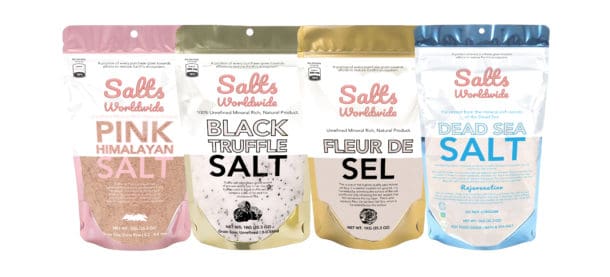Fleur De Lis is a historic symbol for France. It represents the entire country, as well as the city of Paris. What does fleur de sel actually come from? And what’s the story behind it?
Fleur De Lis comes from France’s Larousse region. The term derives from French and Italian words: fleur de sel (sea salt) and fleur de sal (bay salt). When heated, it crystallizes into a white, transparent stone that was first used for decorative purposes. But today, this salty taste has gained popularity as a healthy alternative to regular table salt. Its naturally high moisture content provides its delectable flavor. As an added bonus, it also contains a surprising amount of sodium, which adds yet another health benefit.
Fleur De Lis is made by combining seawater and regular salt. While regular salt lacks the moisture content found in seawater, fleur de sel retains a considerable amount of that moisture. In fact, its moisture content is higher than that of regular salt. This allows fleur de sel to form a somewhat waxy substance when heated, which is why it is often added to foods and drinks.
Of course, the real star of fleur de Lis is its delectable flavor. And it is not just the taste of the salt itself that contributes to its popularity. The seawater that is used to create fleur de sel contains about two percent magnesium, making it one of the highest absorbent salts available. Magnesium helps to increase the mineral and electrical conductivity in our bodies. Since its inclusion in food and drink makes fleur de sel readily available, this mineral is especially important for those with high blood pressure or heart issues.
Fleur de sel is obtained from fossilized seawater harvested off the coasts of France, Ireland, and the northwest coast of America. The region where the seawater is harvested is known as the coasts, or coasts of cretees, of the Mediterranean. Because the nutrient-rich waters of the Mediterranean have already been consumed by other marine species millions of years in the past, there is little new environmental threat involved with harvesting fleur de sel from these waters. As long as the water remains undisturbed, other seafood species will likely be able to take advantage of the inherent properties of the fleur de sel harvested from the sea bed.
Unfortunately, there is also another important environmental benefit to harvesting fleur de sel from the open waters of the Mediterranean. Fleur de sel is a natural breeding ground for other naturally occurring ocean life. As such, any species of sea salt, which may not be commercially valuable, could be negatively affected should humans start to consume them. While sea salt may not be exactly as valuable to consumers as table salt, it still provides an important source of food and fish which human consumption could negatively impact.
This is not the first time that culinary artists have raised serious concerns over the environmental impacts of the fleur de lis fleur de sel mined from the Mediterranean. In fact, the last several decades have witnessed a number of documentaries focusing on the topic. The growing concerns expressed in recent documentaries and cookbooks are only the latest in a series of similar events. Many chefs have raised concerns over the negative effects mining dredges and other practices have on both the natural habitat of the sea-bed and the marine ecosystem which support it.
As new boats are built and the harvesting of fleur de lis fleur de sel increases, more chefs will be forced to consider the impact these activities may have on their clients. While some will argue that chefs themselves are at less risk due to their careful preparation techniques, others feel that they leave their customers in potentially compromising positions. Fleur de lis sea salts are often used to accentuate certain meals, like seafood, for example. The delicate flavor they add cannot be over-emphasized. They are best suited for salty foods, which tend to have a subtle taste, like cheese or chocolate. In the process of trying to create an ecologically-friendly menu, many chefs are inadvertently setting up diners’ nightmare – a meal that features diseased fish and a lack of trace minerals which give the dish its unique flavor.


Recent Comments